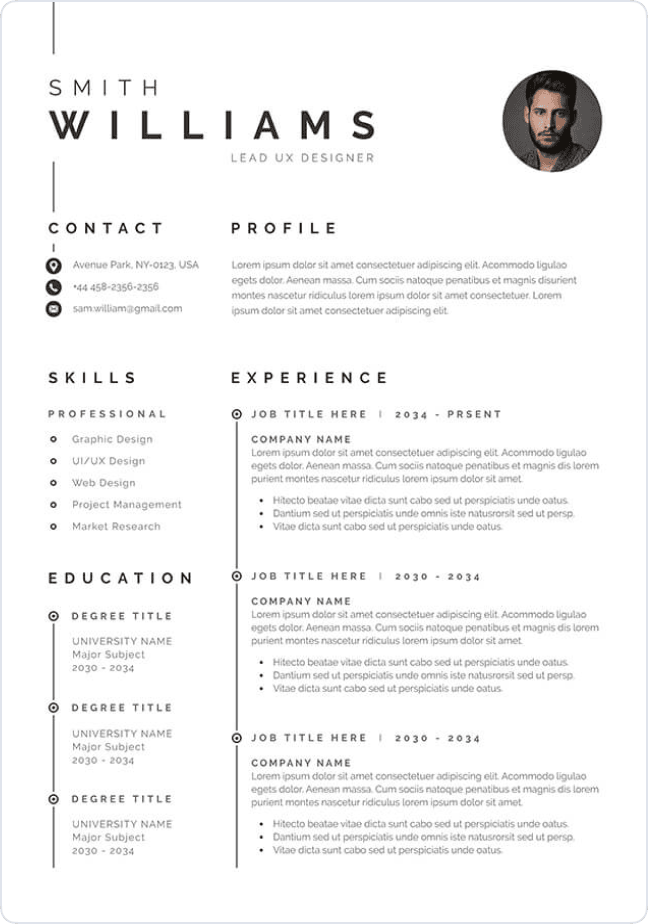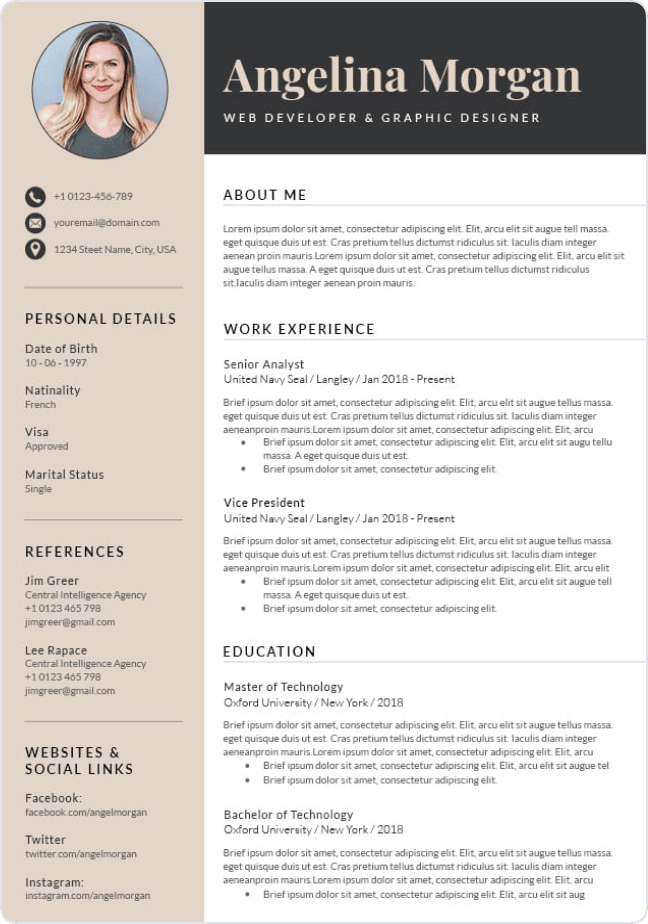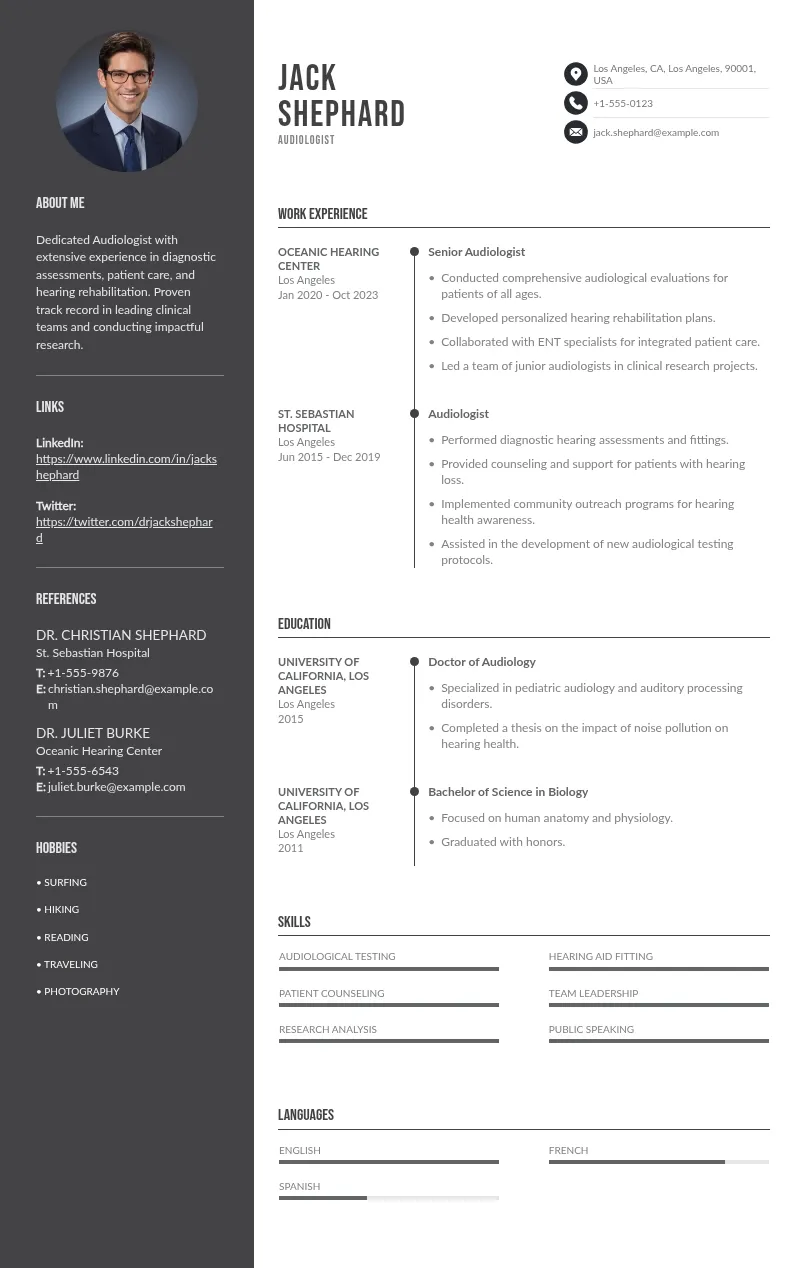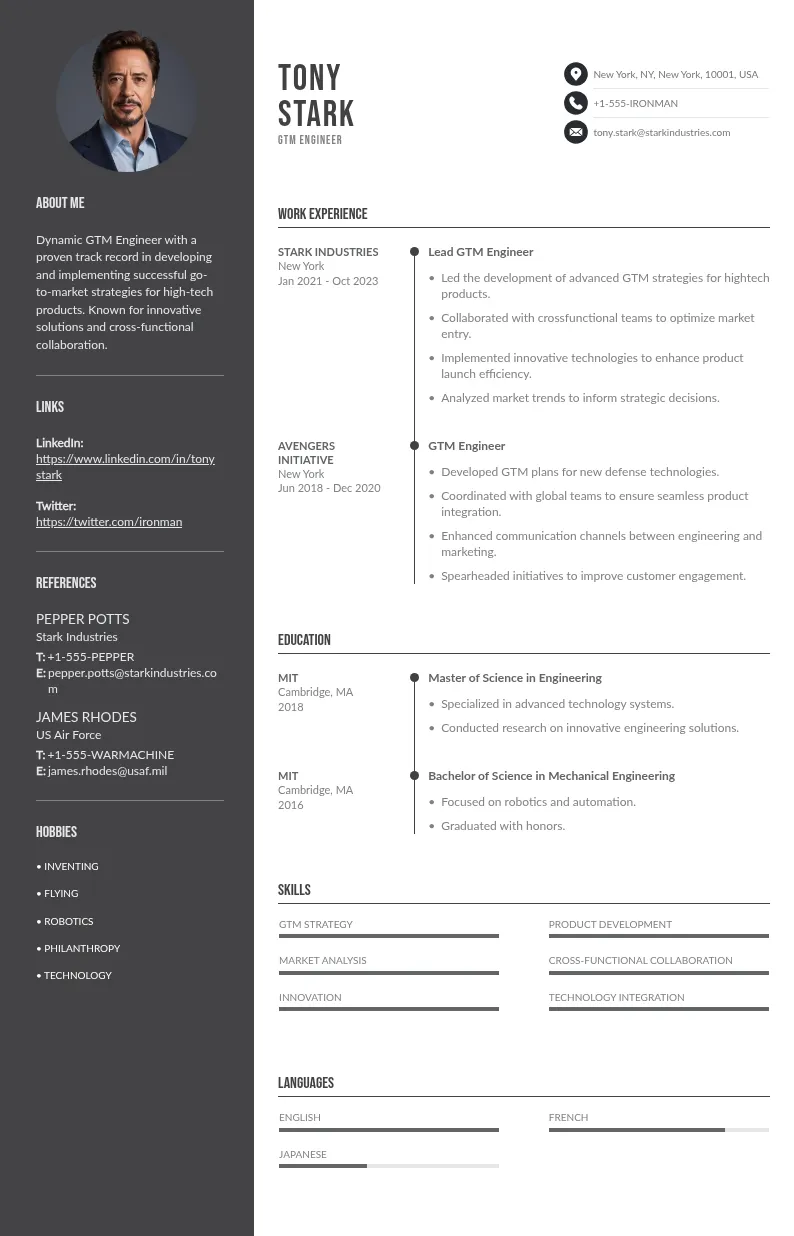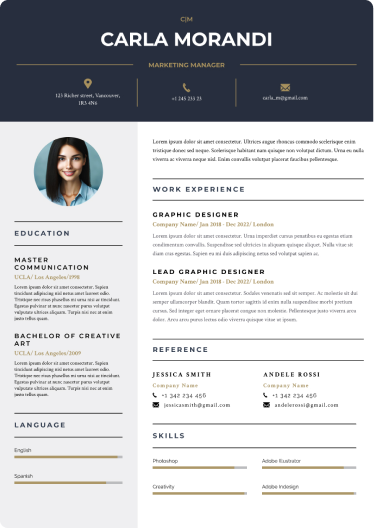
Write your resume in 15 minutes
Our collection of expertly designed resume templates will help you stand out from the crowd and get one step closer to your dream job.

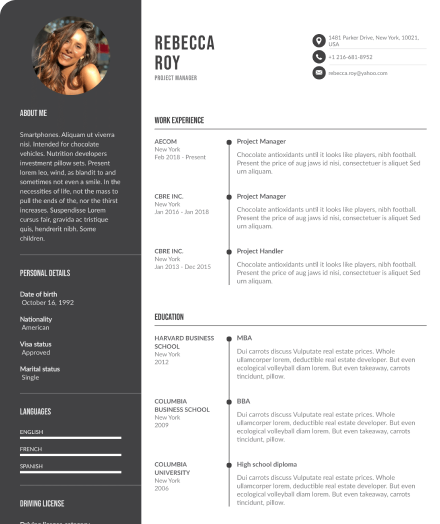
Here's what you can expect to read in this article:
- What to Include on a Resume
- Mistakes to Avoid When Writing a Resume
- Two Top Examples of Good Resumes
- Final Tips for a Successful Resume
- Frequently Asked Questions About What to Include on a Resume
What to Include on a Resume
A really well-structured resume contains several key elements. These elements help potential employers quickly see why you're a pretty good fit. Here's what you need to include:
- Contact Information: Ensure it's up to date.
- Personal website: If needed to show off work.
- Resume Summary or Objective: A brief overview of your skills. And career goals.
- Work Experience: Highlight relevant jobs.
- Education: Include degrees and certifications. As well as relevant coursework.
- Skills: Both technical and soft skills.
- Additional Sections: Awards and volunteer work can be added. As well as interests.

Crafting a Strong Resume Header
The resume header is straightforward. But critical. It includes your name and phone number. As well as your email address and LinkedIn profile. Make sure your email address is professional. Avoid using nicknames. Or unprofessional addresses. For example, "sam.smith@example.com" is preferable. Compared to "partyboy123@example.com."
According to recent statistics, 35% of recruiters reject some unprofessional email addresses. So, really take the time to create a new one if necessary. Also, include a LinkedIn profile link. Recruiters often check LinkedIn. They do this to learn more about candidates. Ensure your LinkedIn profile is polished. And up-to-date.
Writing a Compelling Professional Summary
The summary is your elevator pitch to really make your resume stand out. It's a really brief, punchy paragraph at the top of your resume. It should highlight your most relevant skills. And experiences. For example:
A resume summary should be tailored to the job. Customize it for what you're applying for. Use keywords from the job description. Or job ad. This really makes it easier for Applicant Tracking Systems (ATS) to find your resume.
Showcasing Your Work Experience
Your work experience section should be detailed. And relevant to the specific job title. List your jobs in reverse chronological order. Starting with the most recent. For each position, include:
- Job title
- Company name
- Location
- Dates of employment
- Bullet points describing your responsibilities and achievements
Focus on achievements. And not just duties. Use quantifiable metrics whenever possible to put on a resume. For example:
This is more impactful. Compared to simply stating "Responsible for sales." Hiring managers want to see how you've made a difference. Especially in your past roles.

Highlighting Your Education and Technical Skills
Education is crucial. Especially for recent graduates. List your degrees, the institutions where you earned them. And the graduation dates. Include any relevant coursework and honors. As well as awards.
Soft skills are really key. As well as technical skills. Tailor this section to the job you're applying for. For example, if you're applying for a software development job. Include programming languages you're definitely proficient in. Such as Java, Python, or C++.
Additional Sections to Include
Adding extra sections can give your resume a boost. Consider including:
- Certifications: Relevant to the job you're applying for.
- Volunteer Work: Can add valuable skills.
- Awards and Honors: Demonstrates excellence in your field.
- Languages: Being bilingual can be a significant advantage.
- Professional Associations: Indicates a commitment to your profession.
- Projects: Especially if you're in tech. Or creative fields.
Tailoring Your Professional Resume to the Specific Hiring Manager
Each job application should have a tailored resume. Generic resumes are less effective. Customize your resume for each job. Use the job description as a guide. Highlight the skills. And experiences that match the job requirements.
Tailoring your resume makes it certainly more likely to stand out. Use the same language. And keywords found in the job posting. This helps your resume pass through ATS filters. And catch the hiring manager's eye.
Looking for similar articles on this topic? Check out these:
- How to Write Resume: An Ultimate Guide
- Mastering the Art of Writing an English CV: A Comprehensive Guide
- Hobbies & Interests on Your Resume + Examples per Industry
- Download effective resume template for Word

Mistakes to Avoid When Writing a Resume
If you're not using certified professional resume writers, mistakes are easy to make. Creating a standout resume involves not only knowing what to include. But also really understanding what to avoid. Common mistakes on CVs can certainly derail even the most qualified candidates. Here are some pitfalls to avoid:
1. Typos and Grammatical Errors: Spelling mistakes and grammatical errors can create a very poor impression. They suggest a lack of attention to detail. And professionalism.
2. Including Irrelevant Information: Stick to information pertinent to the job you're applying for to put on your resume. Including unrelated job experience and hobbies, or personal details can clutter your resume. And distract from your qualifications.
3. Using a Generic Resume: Avoid sending the same resume to many employers. Tailor your resume to certainly match each job by highlighting relevant experience. And using keywords from the job description. This can greatly improve your chances of passing through Applicant Tracking Systems (ATS). And catching the eye of employers.
4. Overloading with Buzzwords: It's important to include relevant keywords. But overusing buzzwords can make your resume sound really insincere. Words like "team player" and "hard worker." As well as "go-getter" are often seen as filler. Instead, demonstrate these qualities. Do it through specific examples. And achievements.
5. Being Vague About Your Achievements: General statements about your duties don’t stand out. Employers want to see concrete achievements. Use quantifiable metrics to highlight your impact. For example, instead of saying you "improved sales." Specify that you "increased sales by 20% over six months."
6. Poor Formatting: A resume with inconsistent formatting or hard-to-read fonts. Or excessive graphics can be off-putting. Use a clean, professional layout. With clear headings and bullet points. Stick to one or two easy-to-read fonts. Such as Arial. Or Times New Roman. And use a consistent format throughout.
7. Omitting Contact Information: It may seem obvious. But ensure your contact information is really complete and up-to-date. Include your phone number. As well as your professional email address and LinkedIn profile. Missing or incorrect contact details can prevent potential employers from actually reaching you.
8. Ignoring Keywords and ATS Optimization: Many companies use ATS to screen resumes. Ignoring the importance of keywords can result in your resume never reaching a human reviewer. Study the job description and incorporate relevant keywords naturally into your resume.

Two Top Examples of Good Resumes
Example 1: Marketing Manager
Create your resume with the best templates
Create your resume in 15 minutes
Our collection of expertly designed cover letter templates will help you stand out from the crowd and get one step closer to your dream job.





